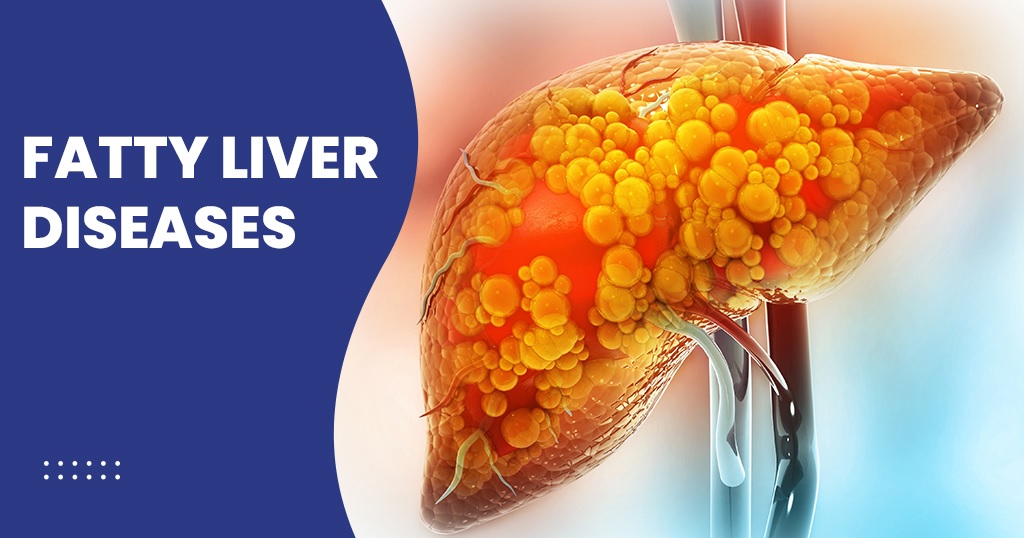


The liver is the largest internal organ of the human body and carries out many crucial functions. The liver removes toxins from the blood and processes essential food nutrients, which are then sent to other parts of the body.
Fatty liver disease is a serious problem, because it can lead to more serious complications. It starts with an excess of fat in your liver cells. In the Western world, it affects about 1 out of every 10 people. If you have fat comprising more than 10% of your liver's weight, you could be suffering from fatty liver disease.
There are two main types of fatty liver; one causes no damage, and the other may lead to inflammation of the liver. Mild steatohepatitis usually causes no harm, but it may be an indication of a more serious condition called NASH. NASH can occur due to excessive alcohol consumption. Non-alcoholic steatohepatitis can also cause liver damage when fats accumulate in the liver cells instead of breaking down into energy stores.
One of the serious problems with an inflamed liver is that it can develop scarring and become hardened over time. This condition, called cirrhosis, is often the result of too much alcohol consumption and can lead to liver failure. One of the top three main causes of cirrhosis is NASH.
Fatty liver, or hepatic steatosis, is caused when fat builds up in the liver. It can be hard to tell without a medical exam whether it's due to obesity, alcohol consumption, hepatitis infections, or other causes.
The second-largest organ in your body is your liver. It filters harmful substances from the blood and helps with nutrients from food and drinks.
High levels of fat in your liver can make it inflamed, leading to liver damage. In severe cases, this can cause scarring that leads to liver failure.
Alcoholic fatty liver disease (AFLD) typically develops in people who drink alcohol, and it is characterized by the accumulation of excessive fat and inflammation in the liver.
In some people, the condition is known as nonalcoholic fatty liver disease (NAFLD).
A form of fatty liver disease called NAFLD is unrelated to high alcohol consumption. There are two categories:
Alcoholic fatty liver disease is brought on by a heavy alcohol intake. The majority of the alcohol you consume is broken down by your liver so it can be eliminated from your body. The breakdown process, nevertheless, can result in harmful chemicals. These chemicals can undermine your body's natural defences, cause inflammation, and harm liver cells. The more alcohol you drink, the more liver damage occurs. The initial stage of alcohol-related liver damage is known as alcoholic fatty liver disease. Cirrhosis and alcoholic hepatitis are the following stages.
When too much fat accumulates in the liver during pregnancy, it is known as acute fatty liver of pregnancy (AFLP). It's a dangerous pregnancy issue that is uncommon. Genetics may play a role, albeit the precise cause is uncertain.
AFLP typically manifests during the third trimester of pregnancy. It poses significant health concerns to the mother and child if left untreated.
The sooner your baby is born, the better, if your doctor diagnoses AFLP. After giving delivery, you might require follow-up treatment for a few days.
After delivering delivery, your liver's health should return to normal in a few weeks.
In fatty liver disease, extra fat is deposited in the cells of the liver and builds up there. This fat accumulation may be brought on by a number of circumstances.
Alcohol abuse can result in AFLD. Heavy alcohol use can change some of the liver's metabolic functions. Some of these metabolic byproducts have the potential to interact with fatty acids to create certain forms of fat that can build up in the liver.
The cause of fatty liver disease in those who don't consume a lot of alcohol is poorly understood. It's likely that these individuals' bodies either produce excessive amounts of fat or inadequately metabolise it.
People with fatty liver disease who don't drink much alcohol may be impacted by one or more of the following factors:
Other potential causes of fatty liver include:
Heavy alcohol use is the primary risk factor for AFLD. The Centers for Disease Control and Prevention (CDC) define heavy drinking as:
According to research, males who drink 40 to 80 grams of alcohol a day and women who drink 20 to 40 grams over the course of 10 to 12 years are more likely to develop severe alcohol-related liver damage.
For reference, a standard drink has roughly 14 grams of alcohol.
Other risk factors for AFLD, besides severe alcohol use, include:
The major risk factors for NAFLD are:
Other risk factors for NAFLD include:
Keep in mind that if you have risk factors, your risk of developing fatty liver disease is higher than it would be for someone without risk factors. It does not necessarily follow that you will eventually develop it.
Discuss preventative methods with your doctor if you have one or more risk factors for fatty liver disease.
People with fatty liver disease frequently show no symptoms until the disease progresses to liver cirrhosis. If you do experience symptoms, they might be:
In most cases, NAFLD does not show any symptoms. When it does, they could consist of:
NASH and severe scarring (cirrhosis) could show these symptoms:
Typically, Alcoholic Fatty Liver Disease (AFLD) doesn't show any signs until the liver has been severely damaged.
When this happens, symptoms can include:
Your doctor will review your medical history, perform a physical exam, prescribe one or more tests, and diagnose you with fatty liver.
Your doctor will probably inquire about the following if they believe you may have fatty liver:
Let your doctor know if you have been experiencing symptoms like fatigue, loss of appetite & other unexplained symptoms.
Physical exam
Your doctor might touch or palpate your belly to feel for liver inflammation. They might be able to feel if your liver is expand.
Your liver can, however, be inflammatory without also being enlarged. By touching you, your doctor might not be able to detect liver inflammation.
Blood Tests
Blood tests that reveal high liver enzyme levels are frequently used to detect fatty liver disease. For instance, to examine your liver enzymes, your doctor can order the alanine aminotransferase test (ALT) and aspartate aminotransferase test (AST).
These tests might be suggested by your doctor if you've started exhibiting symptoms or signs of liver disease, or they might be requested as part of normal blood work.
Inflamed liver is indicated by elevated liver enzyme levels. There are other possible causes of liver inflammation besides fatty liver disease.
If the results of your liver test show that your liver enzymes are elevated, your doctor may probably request more testing to determine what is causing the inflammation.
Other Liver Related Test
Imaging studies
To look for extra fat or other liver issues, your doctor may perform one or more of the imaging tests listed below:
Additionally, they might request a test called vibration-controlled transient elastography (VCTE, FibroScan). Low-frequency sound waves are used in this test to evaluate the stiffness of the liver. It can assist in detecting scarring.
Liver biopsy
The most accurate approach to assess the degree of liver disease is thought to be a liver biopsy.
A liver biopsy involves the insertion of a needle into your liver to extract a sample of tissue for testing. To relieve the pain, they'll provide a local anaesthetic.
This test can help identify whether you have liver scarring and fatty liver disease.
Fatty liver disease has no specific treatment. Doctors instead concentrate on assisting you in modifying the conditions' contributing elements. Additionally, they advise making lifestyle adjustments that might greatly enhance your health. Treatment consists of:
The primary line of treatment for fatty liver disease is lifestyle modifications. It might be helpful to: Depending on your current health and lifestyle choices.
According to a study, vitamin E supplementation may benefit NAFLD patients with their ALT and AST levels, inflammation, and extra fat.
However, more study is required. Too much vitamin E consumption carries potential health hazards.
Before experimenting with a new supplement or natural cure, always consult your doctor. Some dietary supplements and herbal therapies may strain your liver or interact negatively with any pharmaceuticals you're taking.
Your doctor may advise you to make dietary changes if you have fatty liver disease in order to assist treat the condition and reduce your risk of complications.
They might encourage you to do the following actions, for instance:
Maintaining a healthy lifestyle is essential to preventing fatty liver disease and any related complications. Following are some general preventative advice:
 Allergy Test
Allergy Test
 Anemia Test
Anemia Test
 Auto immune
Auto immune
 Blood disorder
Blood disorder
 Bone and Joint
Bone and Joint
 Cancer Test
Cancer Test
 Cardiology Test
Cardiology Test
 Covid Recovery
Covid Recovery
 Dengue Test
Dengue Test
 Depression
Depression
 Diabetes Test
Diabetes Test
 Fatigue
Fatigue
 Fever Test
Fever Test
 Full body
Full body
 Gastro Test
Gastro Test
 Gastrointestinal
Gastrointestinal
 Gynaecology Test
Gynaecology Test
 Heart Test
Heart Test
 HIV Test
HIV Test
 Hormone Test
Hormone Test
 Hypertension
Hypertension
 Immunity Test
Immunity Test
 Infectious Disease
Infectious Disease
 Infertility Test
Infertility Test
 Influenza Test
Influenza Test
 Iron Test
Iron Test
 Kidney Test
Kidney Test
 Liver Test
Liver Test
 Lung Test
Lung Test
 Nephrology
Nephrology
 Obesity
Obesity
 Orthopedics Test
Orthopedics Test
 Physician
Physician
 Pollution Health Checkup
Pollution Health Checkup
 Pregnancy Test
Pregnancy Test
 Prostate Test
Prostate Test
 Senior Citizen Test
Senior Citizen Test
 STD Test
STD Test
 Thyroid Test
Thyroid Test
 Tuberculosis Test
Tuberculosis Test
 Vitamin Test
Vitamin Test
 Women Health Test
Women Health Test